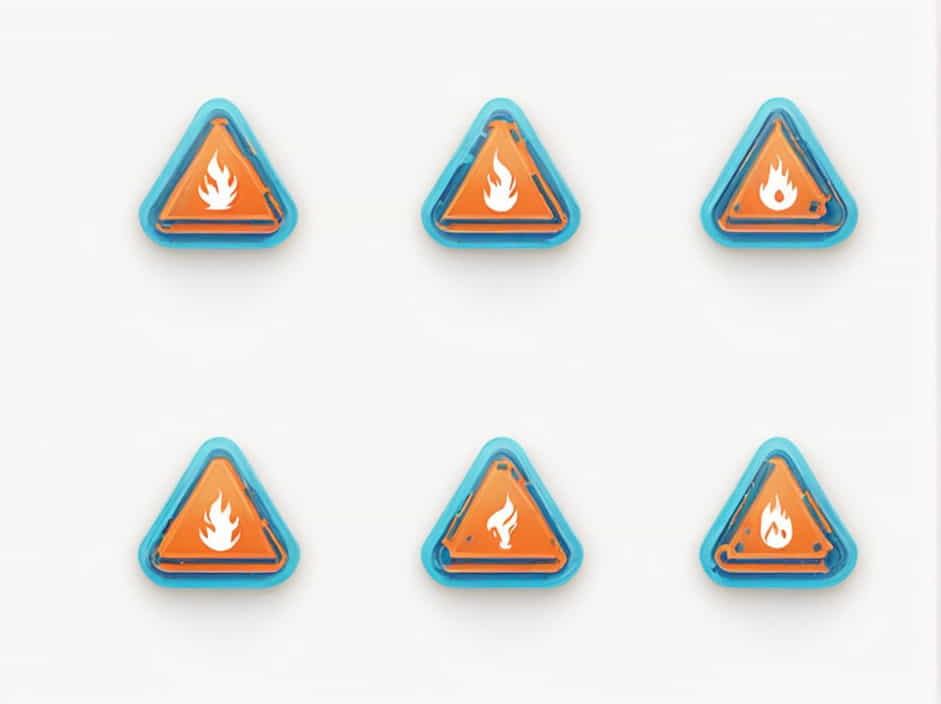Disaster preparedness is a crucial aspect of risk management that helps communities, businesses, and governments reduce the impact of potential disasters. A fundamental step in disaster preparedness is hazard identification, which involves recognizing and assessing potential threats before they cause harm.
By understanding the purpose of hazard identification, organizations and individuals can take proactive measures to minimize damage, protect lives, and ensure a faster recovery process.
What is Hazard Identification?
Hazard identification is the systematic process of recognizing potential dangers that could lead to disasters. These hazards can be natural, technological, or human-made and vary in severity and likelihood.
The process involves:
- Assessing environmental, structural, and operational risks
- Identifying vulnerabilities that could amplify the impact of a disaster
- Developing strategies to mitigate or eliminate hazards
By identifying risks early, communities can take preventative measures rather than simply reacting to disasters when they occur.
Types of Hazards in Disaster Preparedness
There are several types of hazards that must be considered when developing a disaster preparedness plan.
1. Natural Hazards
These hazards occur due to natural forces and are often unpredictable. Examples include:
- Earthquakes – Sudden ground movements that cause structural damage
- Hurricanes and storms – High winds, flooding, and storm surges
- Floods – Rising water levels that threaten property and lives
- Wildfires – Uncontrolled fires that spread rapidly
- Tsunamis – Large ocean waves caused by seismic activity
2. Technological Hazards
These hazards result from technological or industrial failures. Examples include:
- Chemical spills – Dangerous substances leaking into the environment
- Nuclear accidents – Radiation exposure due to power plant malfunctions
- Infrastructure failures – Collapse of bridges, roads, or buildings
3. Human-Made Hazards
Human activities can also contribute to disaster risks. Examples include:
- Terrorism and violence – Attacks that cause mass destruction
- Transportation accidents – Airplane crashes, train derailments, or road accidents
- Cyberattacks – Disruptions to critical infrastructure like power grids or hospitals
Purpose of Hazard Identification in Disaster Preparedness
1. Reducing Potential Risks
The primary goal of hazard identification is to reduce risks before they escalate into disasters. By recognizing potential threats, organizations can:
- Develop early warning systems
- Strengthen infrastructure to withstand hazards
- Educate the public on emergency preparedness
For example, identifying fault lines in earthquake-prone areas helps in enforcing building codes that require earthquake-resistant structures.
2. Enhancing Emergency Response Plans
When hazards are properly identified, emergency responders can develop more effective disaster response plans. This includes:
- Establishing evacuation routes and emergency shelters
- Pre-positioning emergency supplies such as food, water, and medical aid
- Training first responders in hazard-specific protocols
For instance, identifying high-risk flood zones allows cities to create flood barriers and implement evacuation drills before disaster strikes.
3. Protecting Lives and Property
Hazard identification plays a crucial role in safeguarding communities from potential destruction. Early recognition of risks allows:
- Timely evacuations before disasters occur
- Structural reinforcements to prevent building collapses
- Public awareness campaigns to educate people on safety measures
By mapping hurricane-prone areas, coastal residents can be warned in advance, reducing casualties and damage.
4. Improving Resource Allocation
Governments and organizations must allocate resources efficiently to manage disasters effectively. Hazard identification helps in:
- Prioritizing funding for critical infrastructure
- Distributing emergency supplies to high-risk areas
- Deploying disaster response teams where they are needed most
For example, recognizing wildfire-prone regions ensures firefighting resources are pre-positioned for rapid response.
5. Strengthening Community Resilience
Resilience refers to a community’s ability to recover quickly from disasters. By identifying hazards, local authorities can:
- Develop stronger building regulations
- Promote disaster-resistant urban planning
- Encourage community preparedness programs
A well-prepared community with hazard-resistant buildings and informed citizens is more likely to withstand disasters with minimal disruption.
6. Supporting Environmental Protection
Hazard identification also helps protect natural ecosystems that are vital for disaster mitigation. This includes:
- Preserving wetlands that absorb floodwaters
- Protecting forests to prevent landslides and wildfires
- Monitoring industrial sites to prevent chemical spills
By identifying and addressing environmental hazards, communities can maintain natural barriers that reduce disaster impacts.
Steps in Hazard Identification Process
To ensure effective disaster preparedness, organizations and governments follow a structured hazard identification process.
Step 1: Risk Assessment
Experts conduct detailed assessments to determine:
- The likelihood of a hazard occurring
- The potential severity of its impact
- The vulnerabilities of communities and infrastructure
Step 2: Data Collection and Analysis
Hazard identification relies on historical data, weather patterns, and scientific studies to predict potential risks.
Step 3: Mapping Hazard Zones
Using geospatial technology, authorities create hazard maps showing areas at high risk for disasters.
Step 4: Developing Mitigation Strategies
Once hazards are identified, planners develop strategies to reduce risks, such as:
- Strengthening emergency response systems
- Implementing strict zoning laws
- Educating the public on disaster preparedness
Step 5: Continuous Monitoring and Improvement
Hazard identification is an ongoing process that requires regular updates to adapt to changing risks.
Challenges in Hazard Identification
While hazard identification is crucial, there are several challenges:
1. Lack of Awareness
Many communities remain unaware of potential hazards, leading to poor disaster preparedness.
2. Limited Resources
Some governments and organizations lack funding for hazard assessment and disaster mitigation.
3. Climate Change Impact
Rising temperatures, extreme weather, and rising sea levels increase the frequency and intensity of disasters, making hazard prediction more difficult.
4. Inaccurate Data
Outdated or incomplete data can lead to miscalculations, increasing the risk of inadequate preparedness.
Hazard identification is a critical step in disaster preparedness, helping to reduce risks, enhance emergency response, protect lives, and strengthen resilience. By understanding and addressing potential hazards, governments, businesses, and communities can take proactive measures to minimize disaster impacts and ensure a faster recovery.
Investing in hazard identification and disaster preparedness is not just about reacting to emergencies—it is about preventing disasters before they happen.
